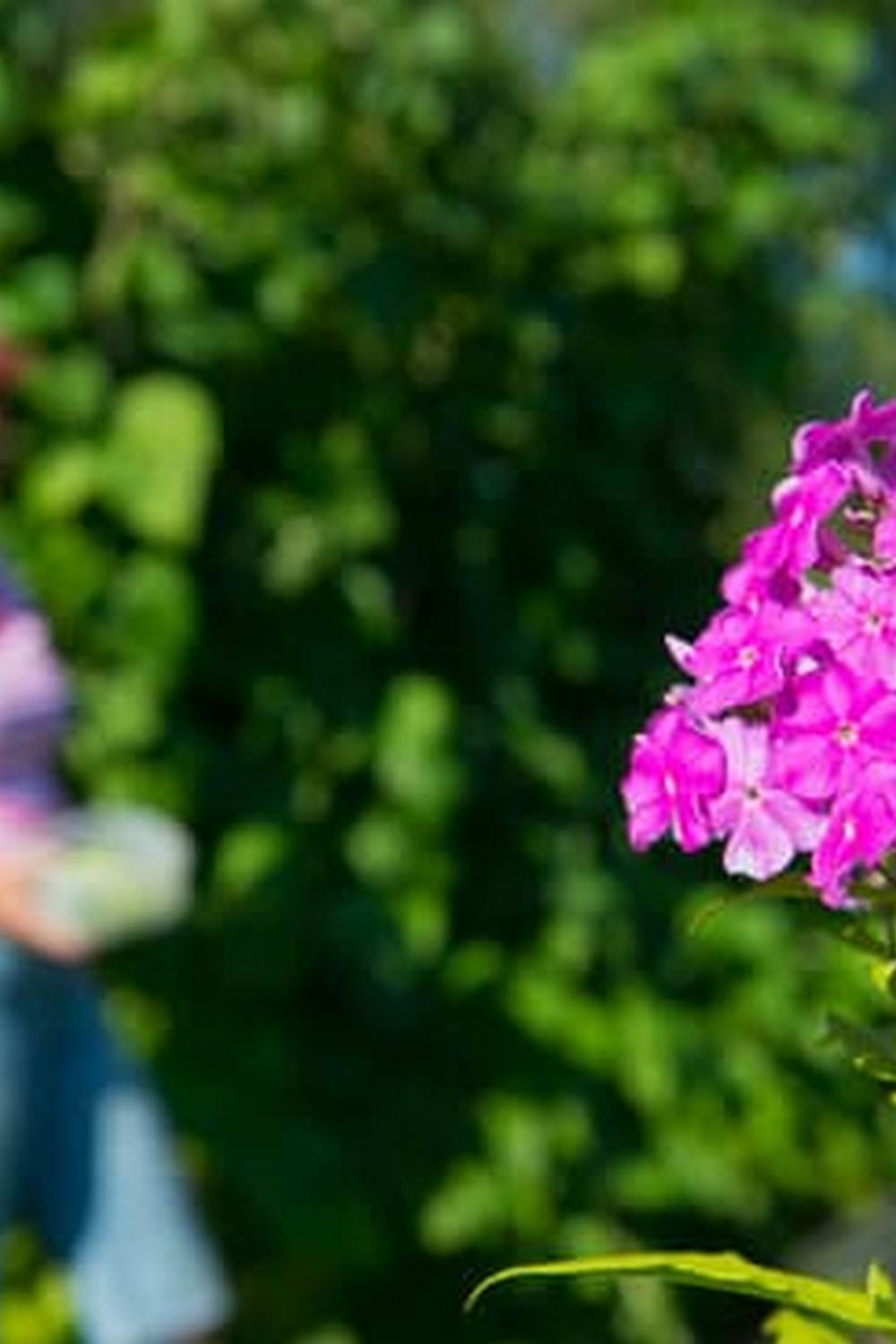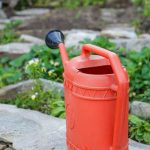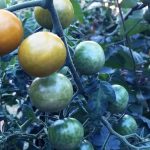Landscape fabric is a popular tool used by gardeners for controlling weeds and maintaining a tidy garden bed. However, there is a growing concern over its potential toxicity in vegetable gardens. This article delves into the question: “Is landscape fabric toxic for vegetable gardens?”.
Landscape fabric, also known as weed barrier fabric or weed control fabric, is a permeable material typically made from synthetic fibers. It is designed to suppress weeds while allowing air, water, and nutrients to reach the soil. Gardeners commonly use it to create a barrier between the soil and mulch or gravel in landscaping projects, including vegetable gardens.
The debate surrounding landscape fabric’s safety in vegetable gardens stems from concerns about the chemicals used in its manufacturing process. Some studies suggest that certain synthetic materials found in landscape fabric may leach harmful substances into the soil over time, potentially affecting plant growth and human health. In the following sections, we will explore these controversies and provide insights into alternative options for eco-friendly weed control in vegetable gardens.
The Debate
Arguments in Favor of Landscape Fabric
Proponents of landscape fabric argue that it is an effective weed control method that helps to reduce the need for frequent weeding in vegetable gardens. By preventing sunlight from reaching the soil, landscape fabric can inhibit weed growth and ultimately save gardeners time and effort. Additionally, landscape fabric is seen as a barrier that protects plants from competing for nutrients with unwanted weeds, leading to healthier plant growth.
Concerns Over Potential Toxicity
One of the main points of contention surrounding the use of landscape fabric in vegetable gardens is the concern over potential toxicity. Some critics worry that certain chemicals used in manufacturing landscape fabric may leach into the soil over time, posing risks to both plant health and human consumption. This issue has raised questions about whether the benefits of using landscape fabric outweigh the possible negative effects on vegetable crops.
Weighing the Pros and Cons
Gardeners must carefully consider both sides of the debate when deciding whether to use landscape fabric in their vegetable gardens. While it may offer undeniable benefits in terms of weed control and plant growth, the uncertainty regarding its long-term impact on soil health and potential toxicity cannot be ignored. As research progresses and more information becomes available, it is important for gardeners to stay informed and make informed decisions based on their individual circumstances.
Understanding Toxicity
Landscape fabric, a commonly used material in gardening for weed control and moisture conservation, has sparked a debate among gardeners about its potential toxicity. Many gardeners wonder: is landscape fabric toxic for vegetable gardens? The concern stems from the chemicals present in some types of landscape fabric that may leach into the soil over time and affect plant growth. Understanding the potential harmful effects of these chemicals is crucial for maintaining a safe and healthy vegetable garden.
To address the issue of toxicity in landscape fabric, it is important to consider the types of chemicals that may be present in these materials. Some landscape fabrics are treated with herbicides or pesticides to enhance their effectiveness in weed control.
These chemicals can not only harm beneficial insects and wildlife but also leach into the soil and potentially affect the health of vegetable plants. Knowing what chemicals are used in the production of landscape fabric is essential for making an informed decision about its use in vegetable gardens.
Here are some potential harmful chemicals found in certain types of landscape fabric:
- Glyphosate: a common herbicide linked to environmental and health concerns
- Triclosan: an antibacterial agent that can disrupt hormonal functions
- Polyvinyl chloride (PVC): a plastic material that may release toxic compounds when exposed to heat or sunlight
Given the potential risks associated with using toxic landscape fabric in vegetable gardens, it is important for gardeners to explore safer alternatives. By choosing eco-friendly options for weed control, such as biodegradable mulches or organic barriers, gardeners can protect their soil health and avoid harmful chemical exposure. Prioritizing the wellbeing of both plants and the environment is key when deciding whether to use landscape fabric in vegetable gardens.
Impact on Soil Health
Landscape fabric is a common choice for many gardeners seeking to control weeds and maintain the cleanliness of their vegetable gardens. However, there is ongoing debate about whether landscape fabric is actually beneficial or harmful to soil health. One of the main concerns that arise is whether landscape fabric is toxic for vegetable gardens and if it negatively impacts the quality of the soil.
Understanding Potential Harmful Chemicals
One of the key issues with landscape fabric in vegetable gardens is the potential presence of harmful chemicals. Some landscape fabrics are treated with synthetic materials or chemicals that can leach into the soil over time. These chemicals may affect the pH balance of the soil, reduce essential nutrient levels, and ultimately harm the growth of vegetables.
Impact on Soil Structure
In addition to potential chemical exposure, landscape fabric can also have a physical impact on soil health. By covering the soil with fabric, essential processes such as water infiltration, aeration, and microbial activity may be hindered. This can lead to compacted soil, poor drainage, and reduced biodiversity in the soil – all factors that are crucial for healthy vegetable growth.
Sustainable Alternatives
For gardeners looking to preserve soil health and avoid any potential toxicity risks, there are eco-friendly alternatives to landscape fabric for weed control in vegetable gardens. Options such as mulching with organic materials like straw or leaves, using biodegradable weed barriers made from natural fibers, or implementing manual weeding techniques can help maintain a healthy balance in the soil without compromising plant growth or environmental safety.
Ultimately, choosing a sustainable approach to weed control can promote long-term soil health and ensure productive harvests in vegetable gardens without exposing them to any toxic substances from landscape fabric.
Alternatives to Landscape Fabric
Landscape fabric has long been a go-to option for gardeners looking to suppress weeds and maintain a tidy appearance in their vegetable gardens. However, the question that often arises is: is landscape fabric toxic for vegetable gardens?
This debate has sparked conversations among gardening enthusiasts, with concerns about the potential harmful chemicals present in some types of landscape fabric. While landscape fabric can be effective in weed control, it is important to weigh the potential risks it may pose to the overall health of your vegetable garden.
When considering alternatives to landscape fabric for weed control in vegetable gardens, there are several eco-friendly options available that can help maintain a healthy and thriving garden without the use of potentially toxic materials. Here are some environmentally conscious alternatives to landscape fabric:
- Organic mulch: Using materials such as straw, wood chips, or leaves as mulch can effectively suppress weeds while also adding nutrients to the soil as they break down over time.
- Newspaper or cardboard: Layering newspaper or cardboard on garden beds can help smother weeds and provide a biodegradable barrier against unwanted growth.
- Crop rotation and companion planting: Strategically planting different crops together can help naturally deter weeds and promote overall garden health.
With these eco-friendly alternatives, gardeners can achieve weed control in their vegetable gardens without resorting to potentially harmful landscape fabric. By incorporating sustainable practices into their gardening routines, individuals can create flourishing vegetable gardens that are beneficial not only for plant growth but also for the environment as a whole.
Case Studies
In recent years, the question “Is landscape fabric toxic for vegetable gardens?” has sparked significant debate among gardening enthusiasts. Some argue that landscape fabric can release harmful chemicals into the soil, impacting plant growth and potentially affecting human health. On the other hand, proponents of landscape fabric believe that when used correctly, it can effectively suppress weeds and improve overall garden maintenance.
To delve deeper into this controversy, let’s examine two contrasting case studies of vegetable gardens-one with landscape fabric and one without. In the garden where landscape fabric is used, there is a noticeable reduction in weed growth, leading to less time spent on weeding tasks. The plants appear to be thriving, with healthy growth and vibrant foliage. However, concerns have been raised about the long-term effects of any potential toxins leaching from the fabric into the soil.
Conversely, in the vegetable garden without landscape fabric, weed control proves to be more labor-intensive as manual weeding is necessary to maintain a tidy garden bed. While some argue that this method allows for better aeration and natural decomposition of organic matter in the soil, others find it challenging to keep up with weed growth without the assistance of a barrier like landscape fabric.
This case study highlights the trade-offs between convenience and potential environmental impact when deciding whether to use landscape fabric in vegetable gardens.
| Scenario | Observations |
|---|---|
| With Landscape Fabric | Weed suppression; healthy plant growth; concerns about chemical leaching |
| Without Landscape Fabric | Labor-intensive weeding; potential benefits of natural soil processes; challenges in weed control |
Expert Advice
Many gardening professionals have differing opinions on whether landscape fabric is toxic for vegetable gardens. Some experts argue that while landscape fabric can be effective in weed control, it may also pose risks to the health of the soil and plants in vegetable gardens. The main concern lies in the materials used to manufacture landscape fabric, as some types contain potentially harmful chemicals that can leach into the soil over time.
One of the key issues with landscape fabric in vegetable gardens is the potential for chemicals to disrupt soil ecosystems and impact plant growth. Persistent organic pollutants (POPs) such as polyethylene or polypropylene found in some landscape fabrics can break down under UV exposure or heat, releasing toxins into the surrounding environment. This contamination not only affects the immediate area where the fabric is placed but can also spread through water runoff or migration by organisms.
While some gardening professionals caution against using traditional landscape fabric due to its potential toxicity, there are eco-friendly alternatives available. Biodegradable weed barriers made from organic materials like jute, cardboard, or newspaper offer a more sustainable approach to weed control without compromising soil health.
By choosing these environmentally safe options, gardeners can maintain a healthy balance of nutrients and microorganisms in their vegetable gardens while still effectively managing weeds. Ultimately, seeking guidance from experts who prioritize sustainability and soil preservation is crucial when deciding whether to use landscape fabric in vegetable gardens.
Conclusion
In conclusion, the debate on whether landscape fabric is toxic for vegetable gardens is ongoing, with valid arguments on both sides. While landscape fabric can be effective in weed control and moisture retention, there are concerns about the potential presence of harmful chemicals that could impact soil health and ultimately, the safety of the vegetables grown in it.
It is essential for gardeners to be cautious when choosing to use landscape fabric in their vegetable gardens. Understanding the potential risks associated with toxic chemicals found in some types of landscape fabrics is crucial. Reading labels carefully and opting for organic or eco-friendly alternatives can help mitigate these concerns and ensure a healthier growing environment for your vegetables.
In light of the controversy surrounding landscape fabric, gardeners may want to explore other options for weed control in their vegetable gardens. Implementing mulch layers, using natural barriers like cardboard or newspaper, regular manual weeding, or investing in biodegradable weed barriers are all viable alternatives that can promote soil health without posing potential risks from toxic substances.
Ultimately, the decision to use landscape fabric should be made cautiously and with full knowledge of its potential impacts on both plant health and human well-being.
Frequently Asked Questions
Why Landscape Fabric Should Be Avoided in a Garden?
Landscape fabric should be avoided in a garden because it can actually hinder the growth of plants and make soil management more difficult. It can prevent water, nutrients, and air from properly reaching the roots of the plants.
Can You Use Landscape Fabric for Tomatoes?
Using landscape fabric for tomatoes is not recommended because it can restrict the development of their root systems and impact their overall growth. Tomatoes require deep and expansive root systems to thrive, which can be compromised by landscape fabric.
Is Landscape Fabric Bad for Soil Health?
Landscape fabric can be bad for soil health because it creates a barrier that prevents natural processes like microbial activity and earthworm movement in the soil. This can lead to poor soil structure, compaction, and decreased overall soil fertility over time.

If you’re looking to get into vegetable gardening, or are just looking for some tips on how to make your current garden better, then you’ve come to the right place! My name is Ethel and I have been gardening for years. In this blog, I’m going to share with you some of my best tips on how to create a successful vegetable garden.





